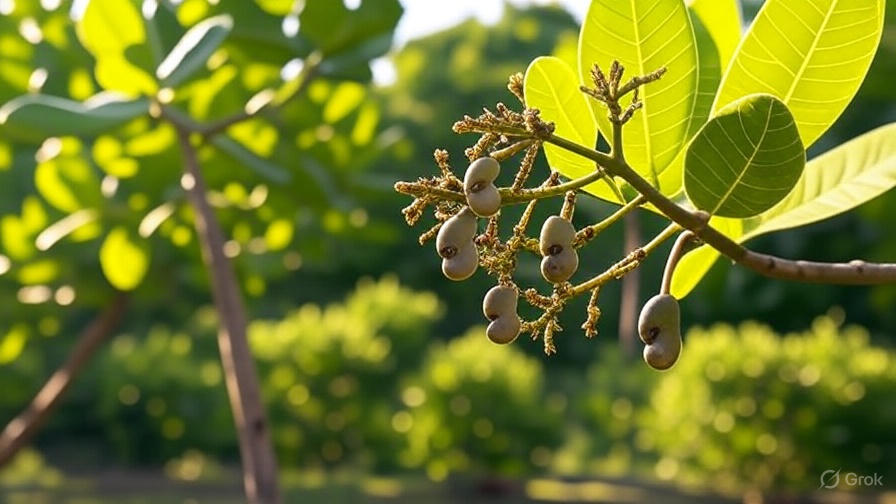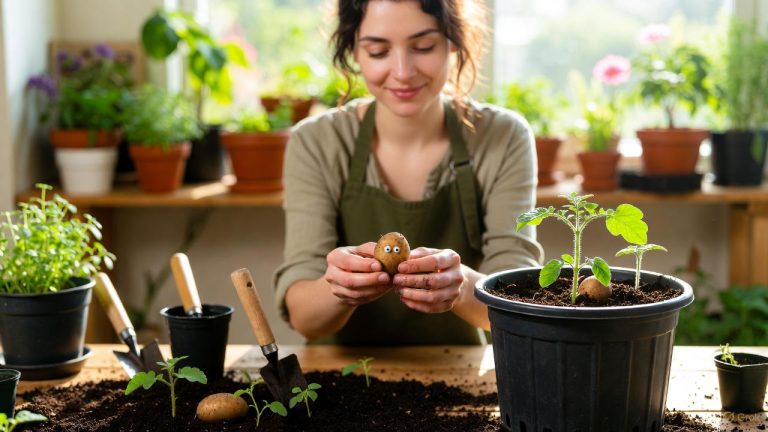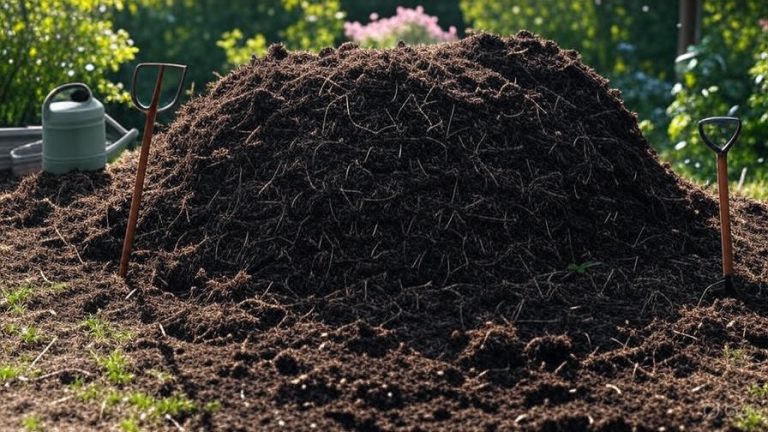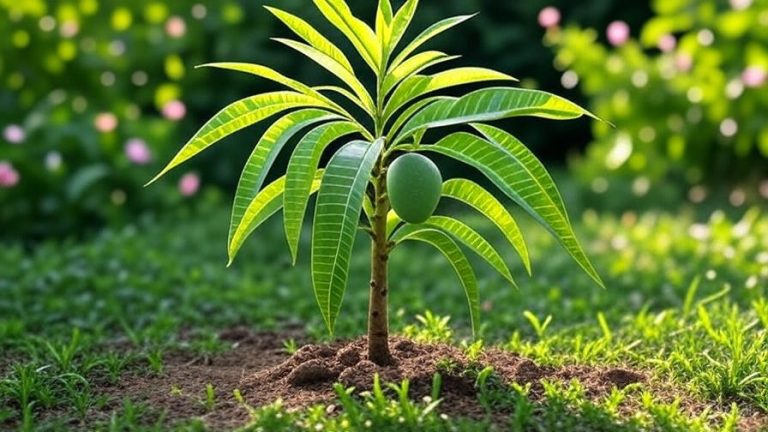How Do Cashew Nuts Grow?
You might find yourself reaching for cashews as a healthy snack or adding them to your favorite recipe. But have you ever wondered how these kidney-shaped treats actually grow? The cashew nut journey is far more fascinating than you might imagine. In fact, cashews have one of the most unusual growth patterns in the nut world, involving toxic shells, mysterious fruits, and complex processing methods.
Today, we’ll take you through the complete lifecycle of cashew nuts, from seed to harvest, revealing why these popular nuts are so much more expensive than other varieties and why you’ll never see them sold in their natural shells at your local grocery store.
The Cashew Tree: A Tropical Marvel
Cashew trees (Anacardium occidentale) are tropical evergreen trees native to South America. These remarkable plants belong to the same family as mangoes and pistachios. The trees can reach impressive heights, with some varieties growing up to 46 feet tall, though most commercial growers prefer dwarf cultivars that top out around 20 feet.
Farmers love dwarf varieties because they mature faster and produce higher yields per acre. These compact trees also make harvesting much easier, since workers don’t need tall ladders to reach the nuts and fruits. The trees have broad, leathery leaves that provide excellent shade in hot tropical climates.
Interestingly, cashew trees are incredibly hardy. They thrive in sandy soils where many other crops would struggle. This resilience makes them perfect for coastal areas and regions with challenging growing conditions. The trees also have an extensive root system that helps prevent soil erosion, making them valuable for environmental conservation.
Climate and Growing Conditions
Cashew trees grow well in various soils, with red sandy loam being the most suitable. However, these adaptable plants can flourish in many different environments. They prefer tropical and subtropical climates with distinct wet and dry seasons.
Temperature plays a crucial role in cashew cultivation. The trees need warm weather year-round, with temperatures ideally ranging between 68°F and 95°F. They can tolerate brief periods of cooler weather but will suffer damage if exposed to frost.
The best time to plant cashew trees is at the beginning of the rainy season, as soon as the soil receives its first rainfall. This timing allows young seedlings to establish strong root systems before the dry season arrives. The trees need adequate water during their establishment phase but become quite drought-tolerant once mature.
Humidity levels also affect cashew tree health. While they can handle high humidity during the growing season, the trees actually prefer drier conditions during their flowering and fruiting phase. This preference explains why cashew-growing regions often have distinct wet and dry seasons.
The Unique Cashew Flowering Process
Cashew trees produce rose-colored fragrant flowers in panicles during winter, not summer. This unusual timing sets cashews apart from many other fruit and nut trees. The flowers appear in large, branched clusters called panicles, creating a beautiful display across the canopy.
Each flower is small but numerous, with male and female parts that allow for both self-pollination and cross-pollination. Bees and other insects play important roles in pollinating cashew flowers, though the trees can also rely on wind pollination to some degree.
The flowering period typically lasts several weeks, during which the entire tree becomes covered in these fragrant pink blossoms. Not every flower will develop into a fruit, which is normal for most fruit trees. Environmental factors like temperature, humidity, and pollinator activity all influence how many flowers successfully produce fruit.
After successful pollination, the flowers begin their transformation into the unusual cashew fruit structure. This process represents one of nature’s most interesting botanical arrangements, where the nut and the fruit develop in a completely unique way.
The Strange Truth About Cashew Fruits and Nuts
Here’s where things get really interesting. What most people call a “cashew apple” is actually not a true fruit at all. The cashew apple develops into an edible red fruit, with the nuts growing in shells at the bottom end of the apples. This arrangement is unlike anything else in the plant kingdom.
The cashew apple is technically called a “false fruit” or accessory fruit because it develops from parts of the flower other than the ovary. The real fruit is actually the kidney-shaped structure we know as the cashew nut, which grows inside a tough shell attached to the bottom of the apple.
The nut rapidly grows until it reaches almost 80% of its final size, then the fruit starts growing to become wider and apple-shaped. This growth pattern means the nut develops first, followed by the swelling of the apple portion.
The cashew apple itself is quite remarkable. It’s juicy, sweet, and highly nutritious, containing high levels of vitamin C. In many cashew-growing regions, people eat the apples fresh or use them to make beverages, jams, and other products. However, the apples are highly perishable and don’t travel well, which is why they’re rarely seen in international markets.

Growth and Development Timeline
The cashew development process follows a predictable timeline that farmers carefully monitor. As the apple matures, the color turns from green to red or yellow and becomes fragrant. This color change signals that the cashew is approaching harvest readiness.
The entire development process from flower to mature fruit takes about two to three months. During the first month, the nut develops rapidly while the apple remains small. During the second month, the apple begins its major growth phase, swelling to many times its original size.
Temperature and rainfall during this development period significantly impact the final quality of both the nuts and apples. Consistent warm temperatures and adequate moisture produce the best results, while extreme weather can cause poor nut fill or apple quality.
Young cashew trees typically begin producing small crops after three to five years, but they don’t reach full production until they’re eight to ten years old. Once established, a single mature tree can produce 30 to 50 pounds of cashews annually for many decades.
The Harvesting Challenge
About two months after the fruit has set, the apple takes on a pink or red hue, and the nut turns gray, signaling they are ready to be picked. However, harvesting cashews presents unique challenges compared to other nuts.
Harvesting mostly consists of picking up nuts that have dropped to the ground after maturing. This natural drop method ensures the cashews are fully ripe when collected. Workers walk through orchards daily during harvest season, gathering the fallen cashews before they can spoil or attract pests.
Some growers also harvest directly from trees when the apples show clear signs of ripeness. Many people wait for the apple to fall to the ground naturally, as this indicates optimal maturity. Fresh fallen cashews must be processed quickly because the apples are highly perishable.
The timing of harvest collection is critical. Cashews left on the ground too long can develop mold or become damaged by insects and animals. In humid conditions, same-day collection is often necessary to maintain quality.
The Toxic Shell Problem
Here’s where cashew processing becomes particularly challenging and dangerous. The shell of the cashew nut contains oil compounds that can cause contact dermatitis similar to poison ivy, primarily resulting from phenolic lipids, anacardic acid, and cardanol.
This toxic shell oil, called cashew nut shell liquid (CNSL), is the same irritating compound found in poison ivy. Coming into contact with urushiol can cause itching, blisters, and skin rashes. This toxicity explains why you never see raw cashews sold in their shells at stores.
The cashew nut shell oil is very corrosive and acidic, causing injury when it contacts hands without protective gloves. Workers in cashew processing facilities must wear protective equipment to avoid painful burns and dermatitis.
The presence of this toxic oil makes cashew processing much more complex and expensive than processing other nuts. Every step must be carefully managed to protect workers while extracting the valuable nuts inside the dangerous shells.
Processing: From Toxic Shell to Safe Snack
The nuts are dried for about 2 to 3 days to reduce their moisture content after harvest. This initial drying helps preserve the nuts and prepares them for the complex processing steps ahead.
The next step involves roasting the nuts in their shells, a process that takes place outdoors to dissipate toxic fumes and avoid physical contact with toxic oils. This roasting serves multiple purposes: it neutralizes the toxic shell oils, makes the shells brittle for easier cracking, and begins the process of making the nuts safe for consumption.
Roasting or steaming shelled cashews at high temperatures removes any urushiol that may have soaked through their shells into the nuts. This heat treatment is absolutely essential for food safety.
After roasting, workers carefully crack the brittle shells to extract the nuts. This step requires skill and experience because the nuts are soft and can easily break into pieces. Broken cashews sell for much lower prices than whole nuts, so minimizing breakage is economically important.
The extracted nuts then go through additional processing steps, including removing the thin skin (testa) that surrounds each nut, sorting by size and quality, and final roasting or other treatments depending on the intended use.
Growing Regions and Global Production
Cashews originally came from Brazil, but today they grow in tropical regions around the world. Vietnam has become the largest cashew processor globally, even though much of the raw cashews come from African countries like Ivory Coast, Nigeria, and Tanzania.
India remains a major producer and processor, particularly in states like Kerala, Karnataka, and Goa. The country has a long history of cashew cultivation and processing, with many traditional methods still in use alongside modern techniques.
Brazil continues to be an important producer, especially in the northeastern states. Brazilian cashews are often considered among the highest quality due to favorable growing conditions and processing expertise.
Many other countries have developed cashew industries, including Indonesia, Philippines, Kenya, and Mozambique. Each region has adapted cultivation and processing methods to local conditions and market demands.
Cultivation Requirements and Techniques
Successful cashew growing requires irrigation during dry periods and fertilization when trees actively grow, especially during flowering and nut development. Young trees need regular watering until their root systems become well-established.
Trees mainly need nitrogen and phosphorus, and possibly zinc for optimal growth and production. Soil testing helps determine specific nutritional needs, as requirements can vary based on local soil conditions.
Plains as well as hill slopes up to 600-700 feet elevation are suitable for cashew cultivation. This elevation range provides the right combination of temperature, rainfall, and drainage for healthy tree growth.
Proper spacing between trees is important for air circulation and sunlight penetration. Most commercial orchards plant trees 25-30 feet apart to allow for full canopy development. Regular pruning helps maintain tree shape and removes diseased or damaged branches.
Pest and Disease Management
Cashew trees face various pest and disease challenges that require careful management. Common pests include cashew stem and root borer, tea mosquito bug, and various scale insects. Integrated pest management approaches combine biological control, cultural practices, and selective pesticide use.
Diseases like anthracnose, powdery mildew, and black mold can significantly reduce yields if not properly managed. Prevention through good orchard hygiene, proper spacing, and resistant varieties is often more effective than treatment after problems develop.
Regular monitoring throughout the growing season helps identify problems early when treatment is most effective. Many successful growers use scouting programs to track pest and disease pressure and time interventions appropriately.
Environmental Benefits and Sustainability
Cashew trees provide important environmental benefits beyond nut production. Their extensive root systems help prevent soil erosion, particularly valuable in coastal areas and sloping terrain. The trees also sequester carbon, contributing to climate change mitigation efforts.
Intercropping opportunities allow farmers to grow other crops between young cashew trees, maximizing land use efficiency. Common intercrops include legumes, vegetables, and forage crops that can provide additional income while trees mature.
Many cashew-growing regions are developing sustainable and organic production systems. These approaches reduce environmental impact while often commanding premium prices in international markets.
Economic Impact and Value Chain
The cashew industry supports millions of farmers and workers worldwide, particularly in developing countries. However, most value addition occurs in processing countries rather than growing regions, limiting income opportunities for farmers.
Recent efforts focus on developing local processing capacity in producing countries. This approach can significantly increase farmer incomes while creating jobs in rural communities. Countries like Ghana and Ivory Coast have invested heavily in domestic processing facilities.
Fair trade and organic certification programs help ensure better prices for farmers while promoting sustainable growing practices. These initiatives often include premium payments, community development projects, and technical assistance programs.
Uses Beyond Snacking
While most people know cashews as a popular snack nut, they have many other applications. Cashew butter provides a creamy alternative to peanut butter, while cashew milk serves dairy-free beverage needs. The nuts also feature prominently in many cuisines, particularly in Indian, Thai, and Chinese cooking.
The cashew apple, though perishable, is used to make beverages, jams, and alcoholic drinks in many producing regions. In Brazil, cashew apple juice is extremely popular, and the fruit is used to make a traditional spirit called cajuína.
Even the toxic shell oil has commercial value. CNSL is used in brake linings, paints, and other industrial applications. This byproduct utilization helps improve the overall economics of cashew processing.
The Future of Cashew Growing
Research continues to develop improved cashew varieties with better yields, disease resistance, and processing characteristics. Dwarf varieties that produce nuts earlier and require less space are particularly promising for small-scale farmers.
Climate change presents both challenges and opportunities for cashew growing. While some traditional growing areas may become less suitable, others may become more favorable. Adaptation strategies include developing drought-tolerant varieties and improved water management techniques.
Processing technology advances are making cashew production more efficient and safer for workers. New equipment designs reduce exposure to toxic shell oils while improving kernel recovery rates.
Conclusion: The Complex Journey of a Simple Nut
The next time you enjoy a handful of cashews, remember the remarkable journey these nuts have taken. From the unusual growth pattern where the nut hangs from the bottom of a false fruit, to the dangerous processing required to make them safe for consumption, cashews represent one of nature’s most complex food production systems.
The combination of challenging growing requirements, toxic processing hazards, and labor-intensive harvesting explains why cashews command premium prices compared to other nuts. Each cashew you eat represents the work of skilled farmers, careful harvesting, and complex processing designed to transform a potentially dangerous raw material into a safe, delicious, and nutritious snack.
The cashew industry continues to evolve, with ongoing efforts to improve farmer livelihoods, develop sustainable production systems, and create innovative products. As global demand for plant-based proteins and healthy snacks continues to grow, cashews are likely to remain an important crop for tropical regions worldwide.
From the initial planting of a seedling to the moment you pop that perfectly processed cashew into your mouth, the journey spans years of careful cultivation, precise timing, and skilled processing. It’s truly a testament to human ingenuity in transforming one of nature’s most challenging nuts into one of our most beloved snacks.







